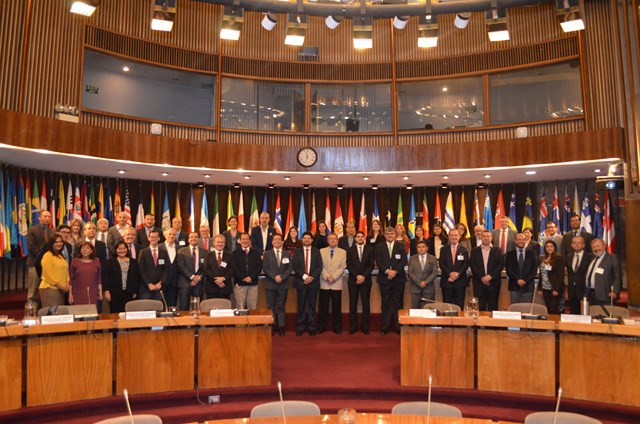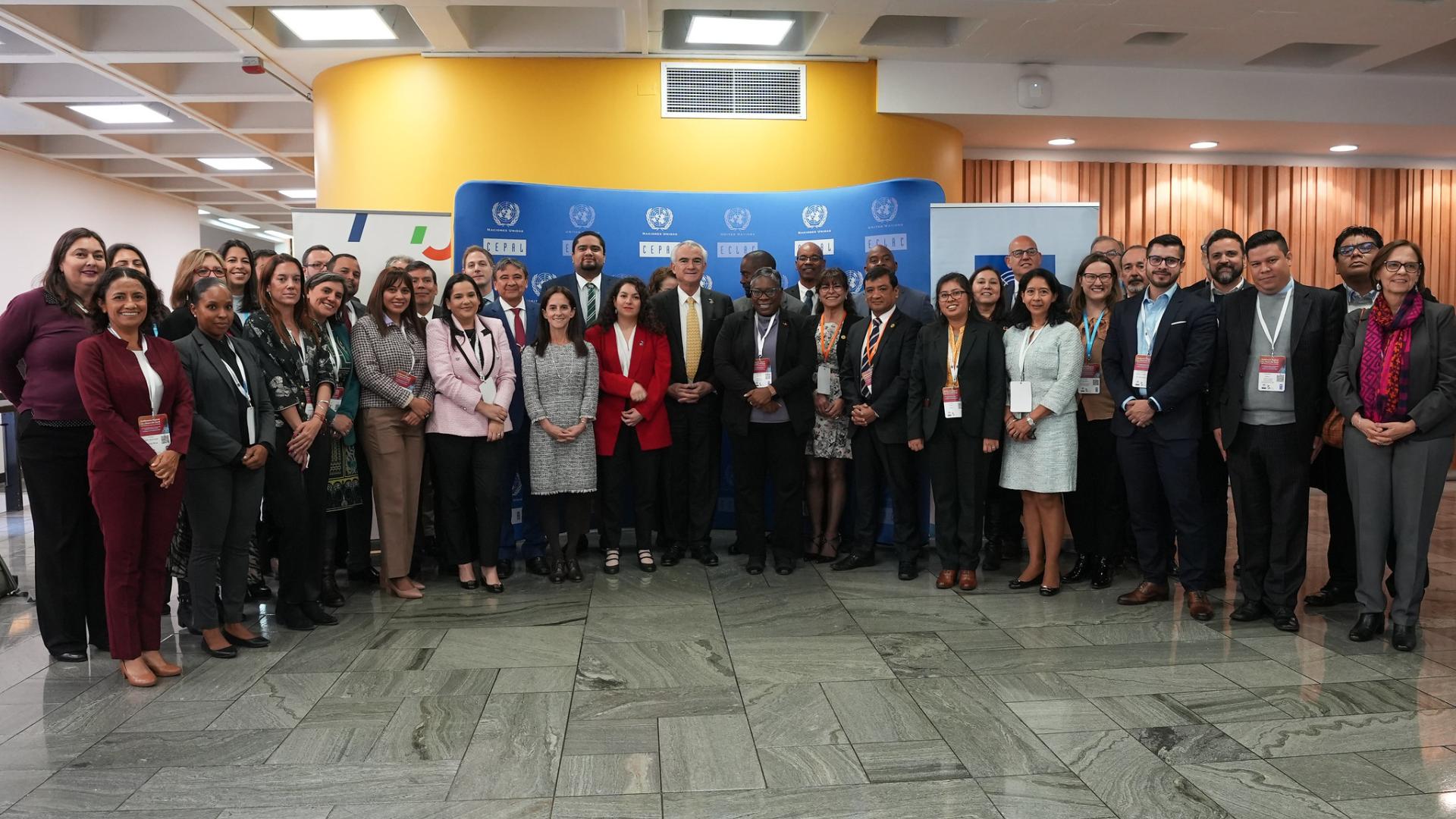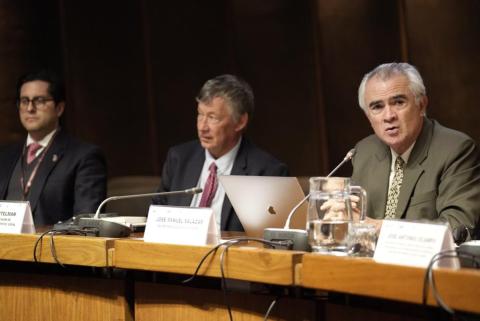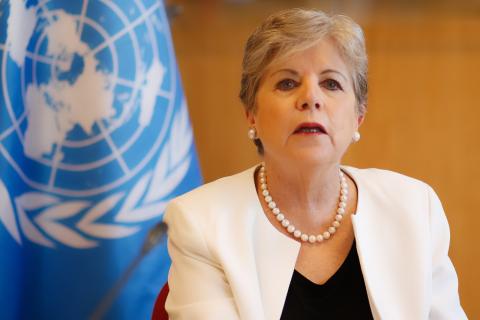Briefing note
This latest regional Seminar is the seventh event organized by ECLAC that arises from the project “Financial Inclusion of SMEs and Development Bank financial innovation policies.” The project’s ultimate objective is to advance and deepen the analysis of financial inclusion of SMEs as a productive development policy for the region of Latin America and the Caribbean, focusing on development bank innovation as a catalyst for change. The Seminar continued with the momentum of the previous seminars and workshops, and built upon previous discussions centered on national case studies on financial inclusion with the presentation of the preliminary version of the regional report. The report draws conclusions from the seven national studies (Argentina, Brazil, Colombia, Costa Rica, Ecuador, Mexico and Peru) and summarizes the key questions on financial inclusion. These questions were further examined and debated at the Seminar.
In addition to the questions on the current state of financial inclusion and the demand and supply factors that affect it, it was asked, “Why intervene for financial inclusion? What defines an SME? and What public policies help jump-start financial inclusion?” There is consensus that regional development is dependent on State intervention with policies on financial inclusion equivalent to productive insertion policies that improve productivity, competition and growth. SMEs play a key role in productive insertion given their relevance in the productive fabric and job creation. Depending on the country, they account for 45-80 percent of national employment. At the same time, in Latin America, a much larger percentage of small businesses encounter entry barriers to financing (31.4% of the total) in comparison to high income countries (18.6%), necessitating some form of intervention for SMEs to prosper.
Furthermore, the definition of SMEs is not clear-cut; they form a very diverse group and are present across all types of economic activities. In general, SMEs can be characterized as entities that operate for short time periods, given their sensitivity to economic cycles. They are also highly responsive to changing business conditions in comparison to larger enterprises, meaning, they can adjust their output much easier and faster. At the same time, they generally have a harder time securing financing because of their size and diversity. Unlike larger firms, they do not always have the traditional credit metrics or credit history to secure favorable credit lines (i.e. lower collateral requirements); and are often overlooked in targeted financial inclusion policies directed towards the smallest companies (microenterprises). This leads to the “auto-exclusion” from formal financing of some SMEs with favorable outcomes that would have otherwise accepted a loan.
It has been suggested that development banks and policy makers can take action in the form of specific public policies that target SMEs to provide them with a more favorable and efficient access to financing. The type of funding these businesses receive is fundamental and must be aligned with their life cycle and survivorship rates. For this, an adequate assessment of business risk and default risk is necessary and consideration must be given to the types of financial instruments and strategies that could spread the risk between investors and borrowers in an equitable way. In addition to financing, technical assistance and training in more complex financial instruments (beyond basic checking accounts) is also key, as well as the simplification of tax procedures and business legalization.
The above mentioned roles and the role of development banks as agents of a productive insertion policy were examined at the Seminar. It is recognized that development banks are institutions with a more socially oriented sense of purpose that seek to maximize social benefits (i.e. expansion of productive capacities, productivity) and maintain systemic financial stability, as opposed to commercial banks that generally seek profit maximization as their ultimate goal. Nevertheless, development banks must maintain adequate financial metrics to be viable. The trade-off between the public, socially oriented nature of development banks and their own financial sustainability and business model is an important and continuing topic of discussion. Furthermore, there is no single solution that would apply across countries as there is great diversity in the structure, complexity and supervision of development banks in the region. The reach of development banks in Latin America is extensive: they hold about 20% of deposits, loan portfolios, capital or assets, and operate in numerous fields. As such, their policies and financial health can have a significant impact.
To some degree, innovation in processes, products, and institutional structure could help alleviate the pressure of the above mentioned trade-off in development banks. Innovation in internal processes, for instance, could lower the cost of financial transactions via the utilization of technological platforms. Among the innovative platforms are electronic factoring, electronic platforms for entrepreneurs, digital wallets, and online technical assistance and virtual advisors. Still, the biggest risk arises from the information asymmetry between lenders and borrowers. Some suggestions for tackling this problem include participation in local communities to be better acquainted with potential clients. And, a redesign of the organization of financial institutions with a focus on credit demand, as well as on the assessment, monitoring and impact of borrowers. Technology can aid in the formulation of new products that bring a new dimension to client assessment. For example, online platforms can be designed to gather client data and provide certain metrics based on various big data inputs. Lessons can be learned from emerging Fintech crowdfunding companies. Closely tied to client risk assessment is the need to establish a certain limit in the level of the population that should receive credits so as to reduce systemic financial risk, and on parallel, evaluate projects and client risk correctly to grant credit only to those that have a certain potential for success. This leads to the next point: innovative technologies should be regulated once they reach a certain threshold of mass utilization.
As the list of examples of the actions that development banks take to align with the politics of financial inclusion expands, the next step is to begin carefully exploring how these past and current experiences could help inspire new policies and initiatives (as well as a replication of successful ones) to further improve financial inclusion and productive insertion of SMEs in the region. On a final note, is the need of current and relevant performance indicators that measure the effectiveness of public policies.
Additional information is available in the following links:
Presentations (Seminar program with links to presentation files)



